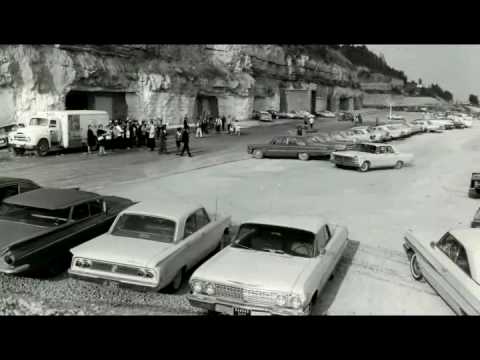In their depths, the world's urban giants hide a network of countless dark tunnels through which underground trains run day after day, providing a steady urban pulse. But cities such as London, Helsinki, New York, Las Vegas, Montreal and Kansas City have, however, converted some disused underground stations and spaces into different purposes, which surprise the most with their ingenuity.
Some solutions stem from the decision of the city authorities to build below instead of above. Others are benefiting from upgrades and changes in the course of journeys through the underground networks, with which some stations and premises were condemned to closure and ruin. And last but not least, some cities offered this type of stations for more or less "free" use by the public, which led to the development of special subcultures living in the underground.
1. Underground Farm in London
V Air Raid in the tunnels under the London underground network, which were used to store explosives during the Second World War, we will be greeted by a completely unexpected scene. It spreads over 2.5 acres of abandoned corridors an experimental farm of hydroponic crops "Growing Underground". Cultivation in the underground represents 70 percent less water than is needed for cultivation on the surface, and at the same time, the use of pesticides is not necessary. The project thus creates a wider supply of micro-crops such as garlic, radishes, watercress, coriander and basil to restaurants and shops.

2. City of shadows in Helsinki
The city authorities of the Finnish capital decided to create instead of urban expansion on the surface an underground city in the embrace of the complete natural isolation of the local rocks. Thus, residents have access to a shopping center, a swimming pool, a church and even a hockey rink. In the future, they plan to build an additional 200 infrastructures, new subway lines and a tunnel with a road that will connect the underground city with the above-ground one.


3. RÉSO underground complex in Montreal
Another underground city that with more than 32 kilometers of tunnels on almost 12 square kilometers applies to the largest complex of its kind in the world! Containing shopping malls, hotels, residential buildings, bank, offices, museums, universities, theater, sports arena and a diverse choice of public transportation. In addition, the two cities are connected by as many as 120 points, which ensures a smooth transition.


4. Underground in New York
The New York underground has been the subject of many myths and legends for many decades. In contrast to the mundane Manhattan on the surface, a subculture called the "Mole People", living in abandoned spaces and from the remains of restaurants and resourcefully migrating according to subway schedules. In addition, various events of hidden societies have also appeared.
But after the success of the urban transformation of the overground railway into a green route The High Line, the city authorities decided that in the future with projects such as the park Delancy Underground in abandoned tram stations and The Low Line, also revive part of the underground world.


5. Residents of the underground tunnels in Las Vegas
Also, the American capital of glitz and entertainment hides its dark side. V wet tunnels, which are easily threatened by floods during major weather disasters, resourceful groups of people have found their home. Due to the aforementioned high level of humidity, creating a continuous several centimeters of water on the ground, the houses were built on plastic or wooden pallets. Although the exact number of residents living in the Las Vegas tunnels is not known, the estimate of journalist Matthew O'Brien, who researched the said community in more detail, is around a thousand.


6. SubTropolis in Kansas City
An artificial cave on vast, more than 5,000 square meters in the cliffs above the Missouri River is said to be considered to be the largest underground warehouse. More than 48 meters deep below the earth's surface, it contains giant tunnels through which an almost 11-kilometer-long illuminated paved road and several kilometers of railway tracks pass. Unlike some of the world's other underground warehouses, SubTropolis was purpose-built for use around 50 companies and organizations, such as the United States Postal Service, the US Environmental Protection Agency Education and Logistics Center, Hallmark Cards, Safeway Stores offices and Grantham University.


Read more: Revival of abandoned metro stations in Paris











